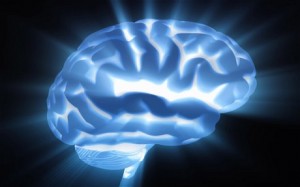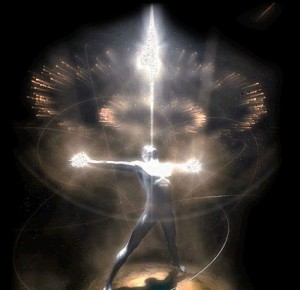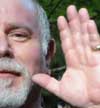Having the Brain and Heart of a Prophet or Sage
This blog will discuss some common things that happen in our brain that take us out of our emotional center, the place we create with a feminine or loving power. This part of our brain is where we understand things using empathy. The great prophets and sages used this part of their brain to understand themselves and others. We develop the highest consciousness using this part of our brain because we are able to understand what effect our emotions, reactions and feelings have on others, even when we do not say a word.
What distinguishes the real prophets and sages from the phony ones is the fact that in the course of the development of their consciousness, they were able to sharpen all of their skills, not just the ones used to understand the external world but also those used to perceive what was going on inside them.
To achieve the consciousness of a sage, we want to experience all of our feelings and perceive what is happening inside. This new consciousness will offer us the ability to be our beautiful authentic self and fully open our heart.
To be authentic, assertive, caring and creative, we need to understand the importance our emotions have for us. Most people I talk to believe that if they do not feel upset they are not upset. The problem is that most of us are not aware of our emotions when we get upset, we are looking outward, not inward and we do not feel upset.
There are stages to fear. Many people think we just get frightened and go into the “fight or flight” response but we actually go into our head to figure out what to do as the first stage of fear.
There are two different areas of our brain, that change our focus from feeling to just thinking, to find solutions to an acute problem.
The first area is our limbic system. When our limbic system perceives a threat that is not an instant physical danger, it instantly puts all of our brains resources into thinking not feeling, so it shuts down the ability we have to be introspective. We can look outside of ourselves and find out what is going on but we are not able to relate this information to all of the emotional memories, feelings and understandings we have developed over our lifetime. If we are only in thought, we are not able to have the wisdom of a “prophet or sage”.
The second area is the cingulate area of our brain; this area helps us to hyper-focus on something so we can find out what we need to do to be safe. This area forms a “worry loop” to focus our attention and help us problem solve. The bad thing is the more we worry the more this area becomes “hot” and when it is hot it can command all of our attention. As we continue to keep this area hot, the focus can give us a worried feeling that for some can even become an obsession.
These two areas, focusing us on problem solving, can keep us in our head, away from “our heart”. Because these mechanisms are so great for instant problem solving and accumulating information, we need to respect and honor them.
We want to put the information of what is going on in our external world into context, in order to do that we need to open up our heart and experience feeling the emotional memories we have that are associated with the external information we receive. When we come from our heart, we are able to understand what we brought to create what is going on, as well as have a non-verbal empathic understanding of the other person’s feelings and motivations.
Using empathy to experience our emotions as well as others, allows us to learn much more than just ideas and verbal thoughts. Using the part of our brain that is empathic and non-verbal to add value or meaning to the bigger picture, allows us a richness of color and depth that makes it possible to see things, people that only use their thoughts can not see. We need to use all of our brain, both our ideas and emotions to have the opportunity to truly grow as a person.
Many people suppress their feelings and get into “positive thoughts” to resolve problems. People are creating a habit of not being in their heart, to resolve things. When we are feeling emotions, we are using our entire brain to create better understandings from experiences over time. The greatest prophets have all used their own feelings, as well as understanding the feelings of others, to see things others could not and create good things.
The second stage of fear is the “fight or flight” mechanism, it takes us out of our thoughts and puts us into our body. During “fight or flight” we are focused on action and we are not as capable of looking at what is going on inside, just as when we were focused on thought in the first stage.
I believe there are some benefits to understanding this. When we experience and express our emotions, we are more likely to stay in touch with them and understand what we are feeling, so we can prevent fear from rising without our knowledge.
There are other ways to be in our heart and not just in our head. Try to be with someone touching them as you talk and notice your feelings. If we feel we are upset, it can be worthwhile to take some deep breaths and be in our body and heart more…if that means we need to take a break then we should ask for that.
We can always do more fun things that are physical as part of our normal routine, to keep our body, brain and spirit healthy. The more we are experiencing what is happening inside the more capable we are of using our heart or “prophet and sage” brain, to make empathic and caring decisions…
How can we stop the “worry circuit”?
Welcome back to another in the series of blogs about how our brain automatically alters our story and reality.
 In our brain there is an actual “worry circuit” that is there to help us focus on genuine risks and gives us cause to feel concern so we do something to reduce the risk of a real problem for us.
In our brain there is an actual “worry circuit” that is there to help us focus on genuine risks and gives us cause to feel concern so we do something to reduce the risk of a real problem for us.
The worry circuit automatically alters our focus and thoughts, that is its purpose.
If our early conditioning gave us lots of reasons to worry, our perspective may be that we are vulnerable to things happening “to us”.
If we were conditioned to worry too much, it is generally because we learned an affect of fear or apprehension that may not have had a basis in reality. This is an affect we picked up from a parent that had anxiety and fear. Conditioned fear is passed down easily. It is time we got rid of this fear so other generations can live a better life.
The problem for us is that if our conditioned fear makes us worry, we feel vulnerable and experience our life as a nightmare. Sometimes we feel fear and do not know why, as in a nightmare where something is chasing us that we are unable to see.
When we are awake we look for what is causing our fear and often continue looking until we find something. The problem for us is we add “how we feel about something” to what we see to get the value and meaning it has for us. If we are anxious we may be irritable, tense, in pain from guarding in our body and more without being in touch with how we feel. If we add how we feel to how we feel about someone, when we are anxious….yikes. Even if we are at the effect of an illusion, we do not know this is happening. Our brain does not like to focus our attention on how we feel inside when we are on alert.
The worry circuit is supposed to help us focus, not feel vulnerable. When we feel things are happening to us, instead of feeling we have challenges we enjoy, the theme to our life becomes similar to Dorothy in the Wizard of Oz. Dorothy, the Tin Man, Scarecrow and Cowardly Lion all were paralyzed by fear and felt vulnerable, not capable.
The place that creates this feeling of vulnerability is very powerful, the neural traffic from this part of our brain to our verbal brain is like a super highway and the neural traffic from our verbal brain to the operating system of the brain is like a small country road. Our thoughts are an afterthought to the feelings the operating system of our brain creates within us.
When we rewrite the non-verbal information that creates our fears, we move the nightmare we live, our illusions and anxiety is gone. The “worry circuit” can now operate the way it was intended, to help us focus for something short term to get it accomplished.
Addendum to the above:
In a situation where someone has O.C.D. it is helpful to both rewrite how they feel about themselves in the situation, as well as have something positive to accomplish instead of worrying, so the circuit can calm down.This usually involves finding a hobby to do instead of repetitive behavior.
What is real growth?
If we can automatically feel better about ourselves when we wear something new, how can we create a feeling like wearing a new outfit that is automatic and is lasting as well?
What creates the automatic adjustments in the lens we use to view everything?
The special challenge I had when I was looking for something to help me with my personal growth was that I believed if the growth I was getting was real, it would help me with my reactions and improve my self-perceptions.
I wanted growth that was inside of me, I wanted to be myself and not have to stop and think to be a better person.
I wanted to feel handsome all the time and be able to see that in the eyes of those looking at me, without having to be concerned about my appearance. I wanted my inner beauty to be something I could see as well.
I wanted to be good to the people that cared about me. I wanted to be present and calm when there were stressful situations not just when it was easy to be that way. The times I had problems were times that I had reactions that took over my thoughts.
Reactions and perceptions are so powerful they command our thoughts and like a nightmare, the feeling we have alters us and our ideas. If we wake up from a nightmare and someone tells us, “that was just a dream” it still feels real. When we feel differently later on, we can see it was just a dream easily.
The same part of our brain that creates our nightmares, also alters the lens we use to give us our perceptions. The same information in this part of our brain that is creating nightmares, is also the fuel for our reactions. This automatic part of us can have fears or perceptions that are erroneous.
The Dalai Lama said, “Eliminate the negative or dark forces from our emotions and there is enlightenment.”
What can change the meaning and value of what we see, are the automatic tunings or adjustments that happen to the lens we use to view everything.
The lens we use gives us the perceptions we have. We all have our own unique way of experiencing others, the world and ourselves.
How we instantly and automatically prepare, tunes or controls the lens we use.
The information that directs our preparations tells us when we should react (another way we prepare), it creates the mood we are in (another way we are prepared), it tells us how we should feel about ourselves and our appearance in relation to our situation (another way we prepare), it controls how guarded or tense we are in our body (another way we prepare), the emotions and feelings we have (another way we prepare) and all of these influence the lens we use.
This is information we learned primarily before we were verbal. We learned it emulating what we empathized (pre-motor pathway). This is something we saw and felt our parents do as they prepared for all the situations they were in.
If we were able to make permanent improvements in the information that created our preparations, we could improve how we feel about our appearance and the improvement would automatically happen, we would have the same feeling we did with a new outfit on and that wonderful feeling about how beautiful or handsome we were would be lasting.
We could also eliminate reactions that we did not want to have. We could stop being jealous.
We could alter the amount of reward we automatically gave ourselves and what feeling we wanted that reward to be, so we could unconditionally love ourselves automatically and when we loved ourselves that way we could easily do that for others as well.
The preparations we have that are automatically happening to us, are altering the lens we use to give us our perception of our self and as we bring clarity to the lens we see not just our own beauty but the beauty in others as well.
When we are able to add meaning to what we see by choice, we can see the beauty within.
When we have information in our operating system that creates good feelings automatically for us before we look in the mirror… we see our own beauty when we look at ourselves and we experience an automatic clarity that allows us to see the beauty in others.
How we experience something is more important than what we think about it because the way we experience ourselves or someone else, can give us options of better experiences.
Enlightenment is removing the darkness to revel our light. Everything is illuminated from within.
A little light can remove a lot of darkness. Please recommend this to others.
The Wizard of Oz gave people the most valuable thing of all, he gave them what was missing so they could be more themselves.
I want to give what is missing so we can be more ourselves as well.
I would love to share this exercise, it helped me to add something that was missing so I could be more myself and have real growth. There are many more exercises like this on this website. Please enjoy them.
What prevents me from unconditionally loving myself?
Click on the above exercise.
Unconditionally loving myself.
Click on the above exercise.










